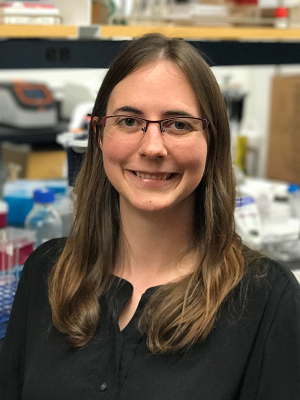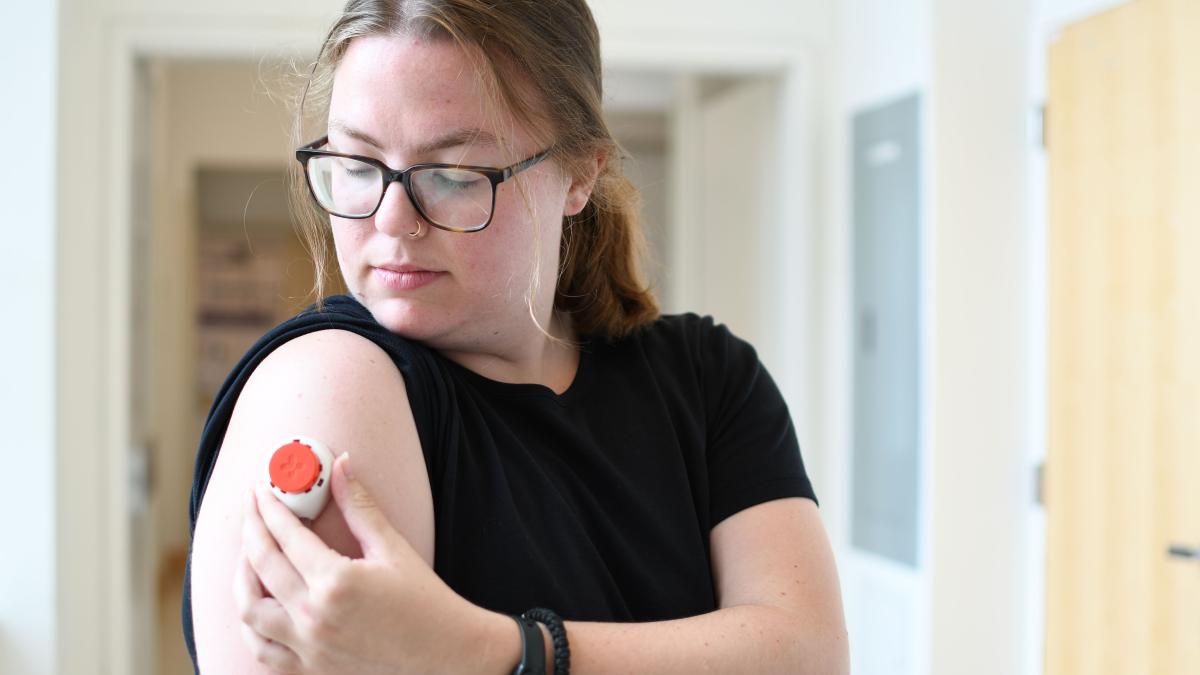In 2021, Ashleigh Theberge, a chemistry professor at the UW, applied for a pilot grant from the Interdisciplinary Center for Exposures, Diseases, Genomics & Environment (EDGE) to test a field application of a new remote blood sampling system.
Theberge and her team were interested in how people respond to wildfire smoke exposure. Specifically, they wanted to measure levels of ribonucleic acid (RNA) in white blood cells before, during and after wildfire smoke events. Production of RNA dictates the levels of proteins produced as part of immune reactions such as inflammation and can be a good measure of immune response.

To examine response to wildfire smoke exposure, Theberge and her team developed the homeRNA kit, which allows people to safely and easily collect their own blood, mix it with a stabilizer and send it back to the lab for analysis. Early pilots had shown that the kit worked — people found it easy to use and the samples maintained high levels of integrity during shipment, even when exposed to extreme heat.
Pinpointing wildfire smoke exposure
Now Theberge was ready to apply homeRNA to wildfire smoke exposure response. While preparing her pilot proposal, she met with Theo Bammler and Jim MacDonald of the EDGE Genomics, Bioinformatics & Biostatistics, and Microphysiological Systems Facility Core. EDGE is part of the UW Department of Environmental & Occupational Health Sciences (DEOHS).
Bammler and MacDonald offer analytical expertise relevant to a broad range of biological systems including “omics” data such as genomics (genetic material), transcriptomics (RNA), proteomics (proteins) and metabolomics (small molecules). They helped Theberge develop a study design that optimized her statistical power within the constraints of the budget.
“Ashleigh’s wildfire pilot was really complex because samples were collected at multiple times from a single individual — both before and at multiple points after varying levels of wildfire exposure,” said Bammler. “What we do is look at the objectives of the investigators, their budget, and statistical considerations to develop a study design that delivers the most bang for the buck.”
Momentum from a Methow Valley pilot study
The EDGE Center awarded Theberge $50,000 — the first significant dedicated funding to test a field application of her innovative homeRNA kit. Over the summers of 2021 and 2022, Theberge’s team used homeRNA kits to collect over 500 samples from volunteers living in Washington’s Methow Valley, an area that experienced record wildfire smoke in 2021, and in other regions not impacted by wildfire smoke.
With complete analysis of the RNA still pending, full results from the study are yet to come. However, the EDGE pilot has yielded two papers to date; helped the research team secure a grant from the U.S. National Institute of Environmental Health Sciences for more than $300,000; and, most recently, provided data for a successful proposal to the Schmidt Sciences Polymath Program, which will allow Theberge to receive up to $2.5 million over the next five years.
Theberge plans to use the new funding to “explore the potential of tailoring drug treatments and doses based on individual biochemistry using remote specimen collection, data analysis, and AI to map molecular pathways at the cellular level.” It’s exciting to think about what’s next.
A new storymap tells the full story of Theberge’s early work on homeRNA and support from the EDGE Center.




